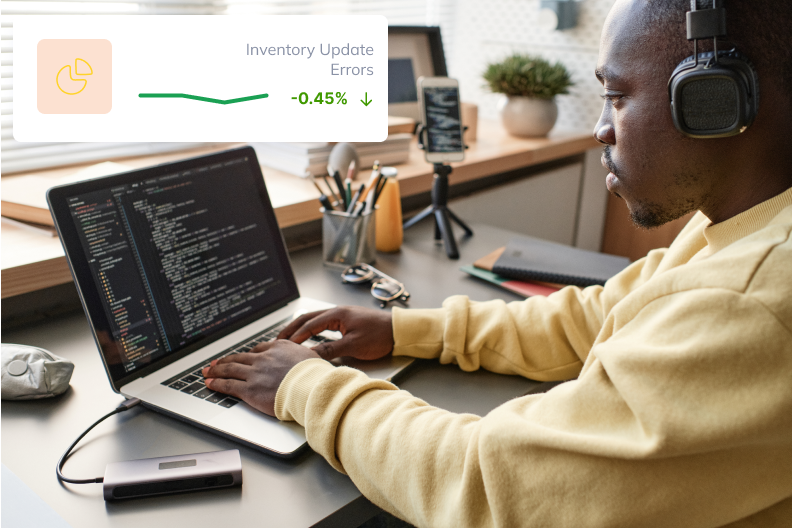The Ultimate Guide to Shopify Inventory Management: Maximizing Your E-Commerce Success
Shopify is a popular e-commerce platform that provides businesses with basic inventory management features to manage their products and stock levels. These features include tracking stock levels, setting low stock alerts, updating product information in real-time, creating and managing product variants, and accessing reporting systems for sales and stock levels. However, having a robust inventory management system is crucial for success in e-commerce. This system can help businesses save time, avoid overstocking or stock shortages, and make informed decisions based on real-time data.
Can Shopify Be Used for Inventory Management?
Shopify's built-in inventory management system provides basic features, but it may not be sufficient for businesses with a large inventory. The system can become cluttered and difficult to navigate, making it challenging to manage stock levels efficiently. Additionally, businesses may face limitations when integrating with third-party software, further restricting their ability to effectively manage their inventory.
Maintaining Inventory on Shopify
To maximize the efficiency of your inventory management on Shopify, it's important to keep your stock levels accurate and up-to-date. This includes tracking stock levels, setting low stock alerts, updating product information in real-time, and creating and managing product variants. A reporting system that provides real-time data on sales, stock levels, and fulfillment can also be helpful in making informed decisions about your inventory. Shopify has some basic information built in, but when you start working with 3PL warehouses, this can become a big issue.
How Shopify Keeps Track of Inventory
Shopify provides various built-in features for tracking and managing inventory levels, ensuring that businesses always have an accurate and up-to-date view of their stock. The platform allows for monitoring of stock levels, setting low stock alerts, and updating product information in real-time. This helps businesses to avoid overstocking or running out of stock and ensures a smooth running of their e-commerce operations.
The Benefits of Integrating Robust Inventory Management Software with Shopify
Integrating a robust inventory management software with Shopify can provide significant benefits to businesses, especially those with large inventories or complex stock management requirements. Shopify's built-in inventory management features have limitations, such as its inability to retrieve inventory adjustments via API and difficulties in promising inventory to other sales channels, like wholesale or drop-ship. These limitations can negatively impact a business's visibility and inventory management efforts.
On the other hand, robust inventory management software, like ChannelApe, offers advanced features such as real-time inventory tracking, low stock alerts, and accurate reporting systems. This allows businesses to have complete control over their inventory and product information, even across multiple sales channels. By integrating this software with Shopify, businesses can streamline their inventory management processes, improve visibility, and make more informed decisions about stock levels and product information.
Additionally, robust inventory management software can provide businesses with the ability to automate certain tasks, freeing up valuable time for other important business operations. This includes automatic stock updates, order fulfillment rules, and shipping label selection, among others. The integration of robust inventory management software with Shopify also provides businesses with a unified platform to manage their inventory, sales, and other key business operations, reducing the risk of errors and inconsistencies.
Syncing Inventory Systems with Shopify
Choosing an inventory system that integrates with Shopify, fulfillment systems, and finance is crucial for businesses to keep their inventory levels and product information up-to-date. ChannelApe provides seamless integration with Shopify, warehouse vendors, and ERP/finance allowing businesses to manage their inventory and product information from one central location. This helps to streamline the inventory management process and saves time by avoiding manual updates across different systems.
Integration Platform as a Service (iPaaS) has revolutionized the way organizations approach integration and many people try to use with Shopify. It allows companies to seamlessly connect different systems and automate data exchange, reducing manual data entry and freeing up resources to focus on other tasks. However, as with any technology, there are limitations to iPaaS that must be considered before implementation.
One of the main limitations of iPaaS systems is their lack of handling rules or data transformations. iPaaS solutions are designed to connect two systems, but they don’t have the ability to process the data in the pipes. This means that businesses must look for other solutions or build custom code to handle these tasks. Another challenge is the requirement for skilled personnel to maintain iPaaS solutions. If an organization does not have the necessary resources, it can become a burden to manage and maintain the iPaaS system, which can result in breakdowns and disruptions.
Security is also a concern with iPaaS solutions, as sensitive data is often transferred between systems. It is crucial for organizations to have strong data security measures and access control features in place to prevent any unintended breaches. Scalability can also be an issue with some iPaaS solutions. As businesses grow and demands for integrations increase, the iPaaS system may struggle to keep up with the demands. This can lead to slow performance and data transfer issues, which can impact the efficiency and productivity of the organization.
Shopify POS and Inventory Management
Shopify POS also provides inventory management features that can be beneficial for businesses. The platform allows for easy tracking of stock levels, setting low stock alerts, and updating product information in real-time. Additionally, Shopify POS provides a centralized view of inventory, making it easy to manage inventory across multiple sales channels. With these features, businesses can save time and effort when it comes to managing their inventory.
Conclusion
Shopify's built-in inventory management system provides basic features, but it may not be enough for growing businesses with a focus on sales growth. To maximize the efficiency of your inventory management and ensure success in e-commerce, it's important to consider integrating with a robust inventory management software. Inventory is a key to cash flow and profit margin. When you streamline managing your inventory, streamlining processes, and making informed decisions based on real-time data, your brand will benefit from increasing NPS, margins and require less bubble gum and duct tape solutions to keep things running.


